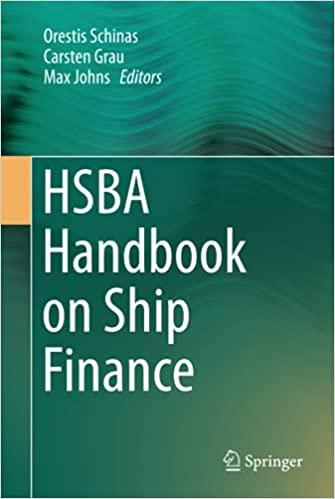Question
Capital Structure Decisions: Introduction Up to this point when we calculated a firm's weighted average cost of capital (WACC), we assumed that the firm had
Capital Structure Decisions: Introduction Up to this point when we calculated a firm's weighted average cost of capital (WACC), we assumed that the firm had a specific target capital structure. However, target capital structures often change over time, these changes affect the risk and cost of each type of capital, and thus impact the firm's WACC. In addition, changes in a firm's WACC impact its capital budgeting decisions and its stock price. Many factors influence capital structure decisions and determining the firm's optimal capital structure is not an exact science. In fact, even firms in the same industry often have dramatically different capital structures. Capital refers to investor-supplied fundsdebt, preferred stock, common stock, and retained earnings. A firm's capital structure is the mix of debt, preferred stock, and common equity used to finance the firm's assets. Capital structure theory suggests that some optimal capital structure exists that simultaneously a firm's stock price and its cost of capital. The optimal capital structure strikes a balance between risk and return. A firm's target capital structure is generally set equal to the estimated optimal capital structure. However, the target may change over time as conditions change, but at any given moment, a well-managed firm's management has a specific structure in mind; and financing decisions are made so as to be consistent with this target capital structure. Actual capital structures also change over time for two different reasons: as a result of deliberate actions or as a result of market actions. First, if a firm is not currently at its target, it may deliberately raise funds in a manner that moves the actual capital structure toward its target. Second, the firm could incur high profits or losses that lead to significant changes in book value equity as shown on the balance sheet and to a decline in its stock price. Similarly interest rate changes due to changes in the general level of rates and/or changes in the firm's default risk could cause significant changes in its debt's market value. Both of these changes could result in large changes in its measured capital structure. Give the correct response to the following question. Which of the following is/are not investor-supplied fund(s)?
Step by Step Solution
There are 3 Steps involved in it
Step: 1

Get Instant Access to Expert-Tailored Solutions
See step-by-step solutions with expert insights and AI powered tools for academic success
Step: 2

Step: 3

Ace Your Homework with AI
Get the answers you need in no time with our AI-driven, step-by-step assistance
Get Started


